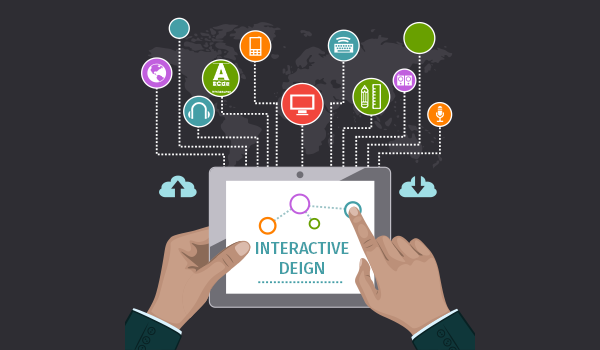Table of Contents
Interaction Design is the design concept that everyone is talking about. It is mandatory for all digital projects that they incorporate elements of interactive design for aligning with the coming trends.
How do you design things that people will love to interact with? With technology, the approach is being tweaked but one of the most important elements that remain standard is that people prefer to use intuitive design that is entirely functional and aesthetically valuable.

What is Interaction Design
Human-computer interaction is an important aspect of design and revolves around shaping digital things for human use. The trend of designing interactive digital products helps connect the digital world to human emotions and feelings. The screen function in the digital world is connected to interact with digital products. Interaction design combines all design elements and its function into one common idea and purpose.
Designing and replicating interactions for better digital connection depends on principles of good visuals and the new technology is fast changing to meet the demand.
Usability
Usability is an important metric in deciding interactivity, helping one to anticipate user interactions with the system, identify glitches, and even invent new ways of performing things.
As part of interaction design, one can
• Define user interactions with the interface
• Anticipate user behavior
• Mitigate errors
• Consider response time
• Assess each element in the design
• Simplify for better learning modes
The concepts and ideas helps one in the design community on a frequent basis. While the techniques to create interactive design may be varied, the principles of good design are nearly the same.
Guiding Principles
The principles of human emotion and interaction are combined with design to determine how a project should work. The appealing factor is taken into consideration too.
Here are the principles or concepts that will let user connect with design
• Motion: User motions like swipes and taps activate elements in the design and set them in motion. Clicking a mouse will produce a certain effect and there are aesthetics involved with the motion with visual cues in photographs, pull indications in design elements and the like.
• Space: The environment for user interaction in a two- or three- dimensional space extends the screen too.
• Time: The amount of time a user spends in interactions should be appropriately engaging and should be of specific length to retain attention.
• Sound: Digital design also includes sound. There are users who love it while others are not so happy about it. Sound is important but the design needs to include an option to switch it off for users who do not want to listen to it.
• Aesthetics: Every design element adds to the aesthetics. The right emotional message needs to be conveyed to the user. Space, color, typography, contrast and readability play significant roles in the visual aspect of interaction design.
Design Concepts
It is important to do all things to get design play an important role in more and more interactions. The visuals are not highly different than other design projects. The major consideration is size and scale in this type of scenario. Many interactive projects are smaller in size. Some designs are perfect for the design for a phone or watch but the design for rendering on desktop computers mostly will be different.
When thinking visually, the smallest canvas of house will be part of design and build up. It is better to enhance the design by keeping a clean slate.
• Space: Some designers try to decrease space but one needs to give each of the elements more room especially in small designs. One needs to ensure that each element can perform the correct action after being given plenty of room and large enough to touch without activating the other element. Use multiple screens to adjust to small spaces.
• Color: The brand colors are important and they need to provide enough contrast in varied environments. Optional colors are required for the color palette especially for creating interaction items. Bright and engaging colors work in mobile and watch apps.
• Typography: Lettering should be readable and modern-style typefaces including serif fonts with a medium stroke width would be good enough. Do not resort to fonts that are condensed, bold or light or even the ones with elaborate strokes.
• Contrast: The elements should live in contrast to the elements surrounding it to preserve its importance. Stark contrast can make elements good to understand. Also such content will draw attention to the interaction. Use color, typography and the space clearly to create the contrast.
• Readability: All the elements need to be easy to “read” and need to attract attention within a fraction of a second since the attention span of the user is quite less. Understanding the elements and their readability important in this regard.
Conclusion:
Interaction design is highly important and many users are concerned with the overall design of the site or project on diverse platforms. One needs to meet the expectation of doing more than giving plain content to the user.
Planning and designing interactions is the core aspect of the design nowadays. It is to the credit of such designers who make the interactions work and a good developer who can keep the codes robust that will set your creation apart from others.




